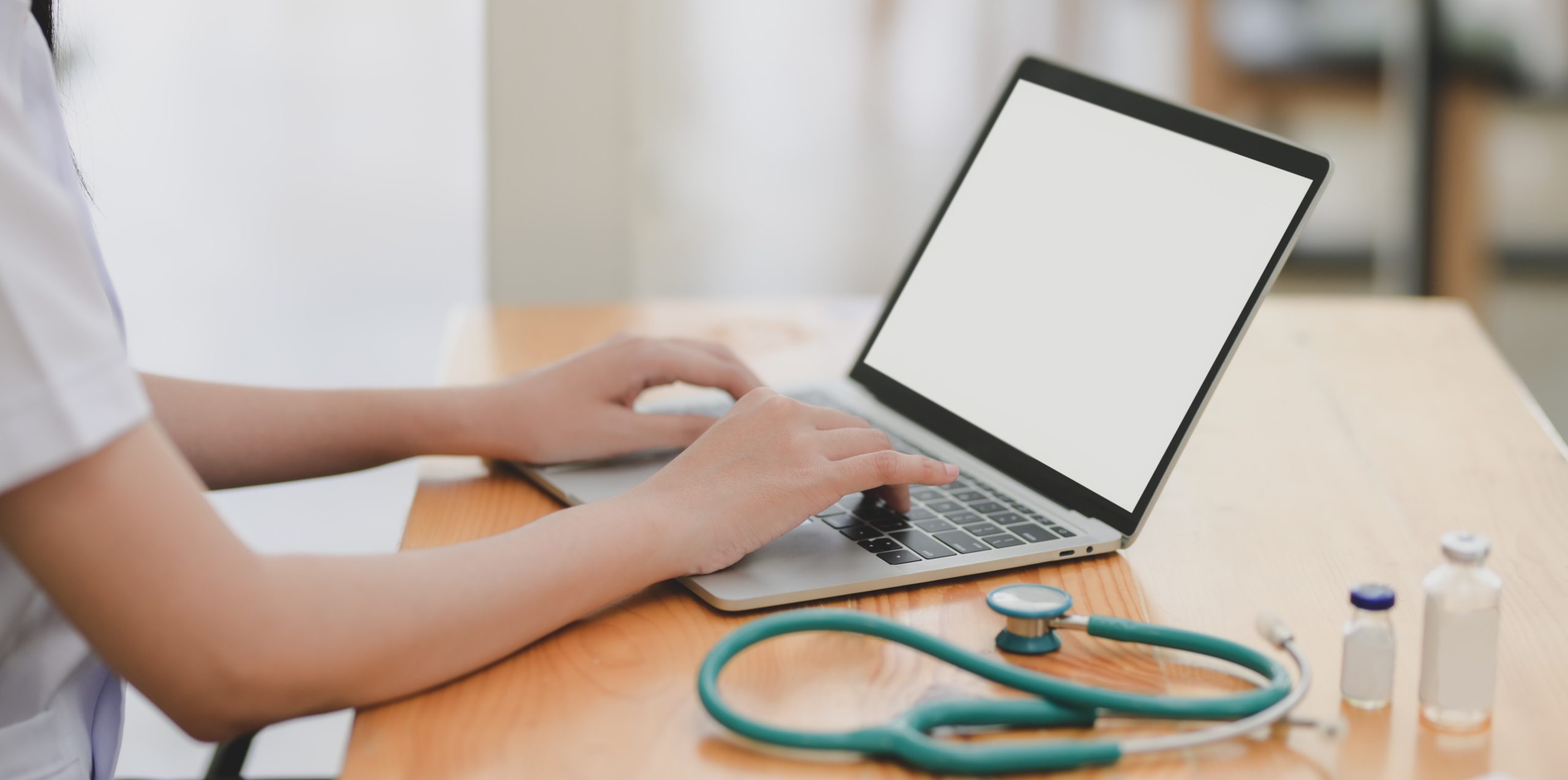Ashley Buehnerkemper

We’ve discussed telehealth visits a few times now because they’ve become increasingly popular and practically essential right now in the midst of COVID-19 and social distancing. This time though, let’s dive a little deeper into actually holding a telehealth visit. Having the right space, equipment and overall approach are important in creating an ideal experience for your patient.
Using the Right Space
Telehealth visits can be done just about anywhere, but it’s still a good idea to have a set space for your virtual appointments. This will help you maintain consistency with all aspects of the visit – your sound, lighting, appearance, etc. The space can be at your practice or your home, wherever it’s more convenient and will offer the best experience. That includes a space that’s private and free from distractions, so your patient feels they have your full attention and know their personal information is safe.
Using the Right Equipment
The last thing you want is your telehealth visit to be full of technical issues. This can negatively affect communication and your ability to properly diagnose. And a negative experience can cause a patient to be less open to future telehealth visits. Using and testing the right equipment during your appointments can help you avoid technical hiccups and satisfy your patient’s expectations.
- Webcam – A good, high-quality camera won’t replace the clarity of an in-person visit, but it will help recreate it. If your patient can clearly see and interact with you, they’ll be much more comfortable. Most laptops and mobile devices now have built-in cameras, but a lot of desktops still don’t. So if you don’t have a webcam or need a better-quality camera, it’s an easy fix. And nowadays, a high-quality webcam doesn’t have to cost you an arm and a leg. Here are a few high-rated but affordable options. Placement of your webcam is also important. Whether it’s built into your computer or external, try to keep it at eye level to maintain eye contact.
- Microphone – Quality sound is also important for a good experience. If your patient has difficulty hearing you or vice versa, key communication points can be missed. Like webcams, many desktops, laptops and mobile devices have quality microphones and speakers built in. But if you have problems when testing out your sound, using an external microphone or headset may be a good idea. Here are few options for mics and
- Lighting – Now you don’t need to go out and buy a professional lighting kit, just make sure the space you choose is properly lit. And that means not under-lit or over-lit. Turn on more lights or bring in a lamp, etc. if needed. Or if there’s too much light in the room you’re using, try covering your window, etc. Do what you can to create the best-looking image of yourself possible.
- Power source – This is simple, but important. Make sure your computer or device is fully charged or plugged into a power source, so you don’t run out of power during your telehealth visit. You should also close out other programs and apps on your device. Sometimes these can drain your power faster or impact the quality of your video stream. If not using an app, the browser you choose can also impact the quality of your video. Chrome or Firefox browsers are recommended if needing to use a web browser.
- Internet – You’re most likely using a Wi-Fi connection for your internet, which is fine as long as you have a strong connection in your designated space. If you have connection issues, you may consider using a wired ethernet cable instead to prevent disconnections. Also, if you’re using your phone and have issues with your wireless data, you may want to connect to a Wi-Fi source instead.
Dressing for Success
When choosing your attire, treat a telehealth visit just like a regular in-person visit and dress professionally. You want the patient to feel as confident in you as they would if they were walking in your office.
The Visit
Now that you have the right space, set up your equipment and are dressed professionally, it’s time to conduct your telehealth visit. Beforehand though, it’s best to review the patient’s information/medical issues so you’re fully prepared to discuss. You can also keep their medical history on hand to reference, whether it’s a paper copy or pulled up on your device. When prompted, sign on to begin the appointment. From there, you know what to do. Follow the same guidelines you would in an in-person visit. Certainly, the remote setup is going to change some aspects of your typical routine and not being able to physically examine the patient can be challenging but do the best you can with what you have.
Once everything’s wrapping up, thank the patient for joining you and explain what the next steps are as you normally would, whether it be a follow up visit, picking up a prescription, etc. You can also ask them for feedback on the telehealth visit, so you can make the necessary improvements/adjustments next time. Hopefully, you won’t encounter any (or too many) technical issues during the visit, but if something major happens you need help with, you may want to have the number of your telehealth service’s IT support team handy just in case.
Need help adjusting to this new reality of practicing? Our practice management experts are here to support you. Schedule a consultation today!